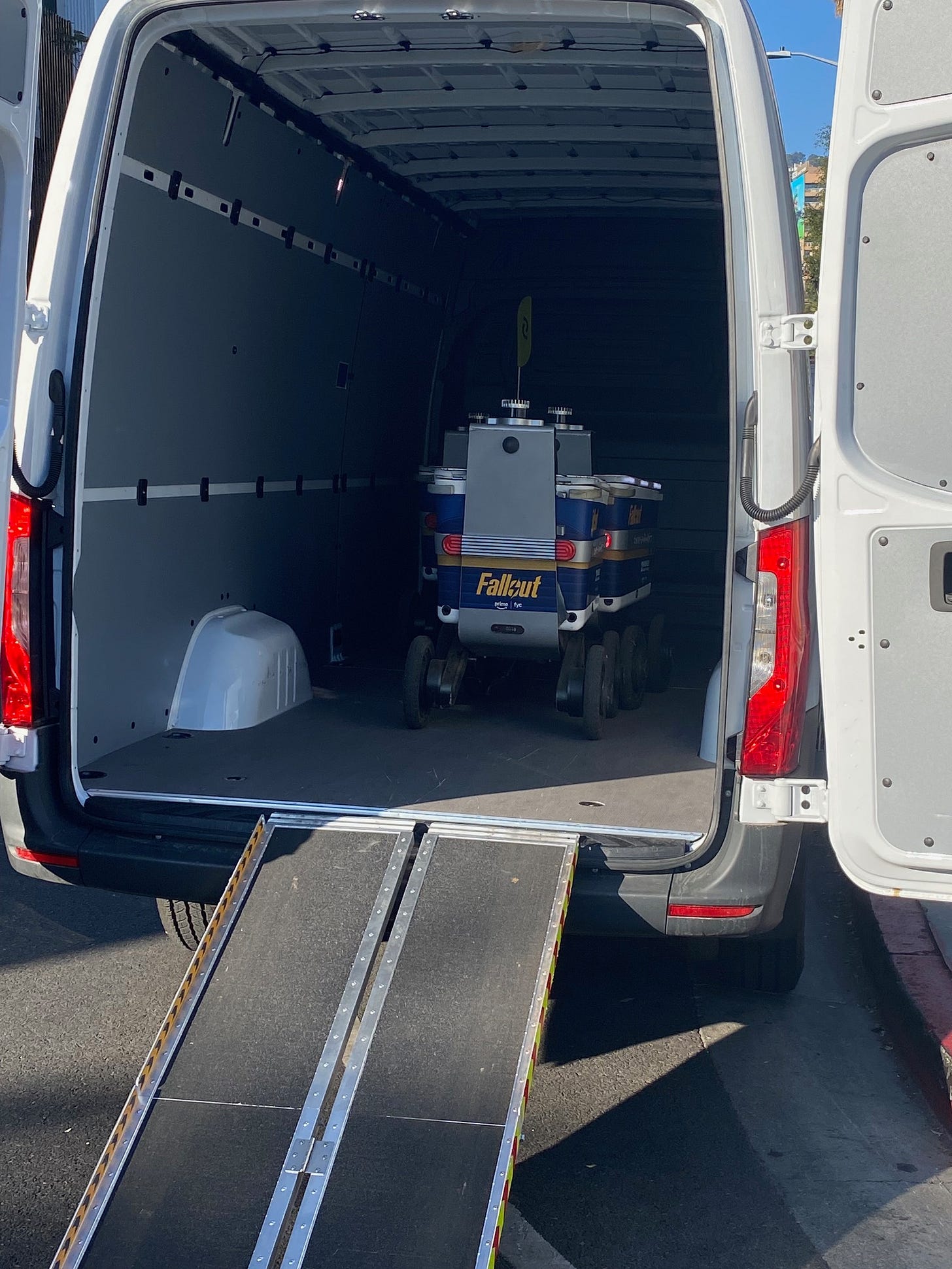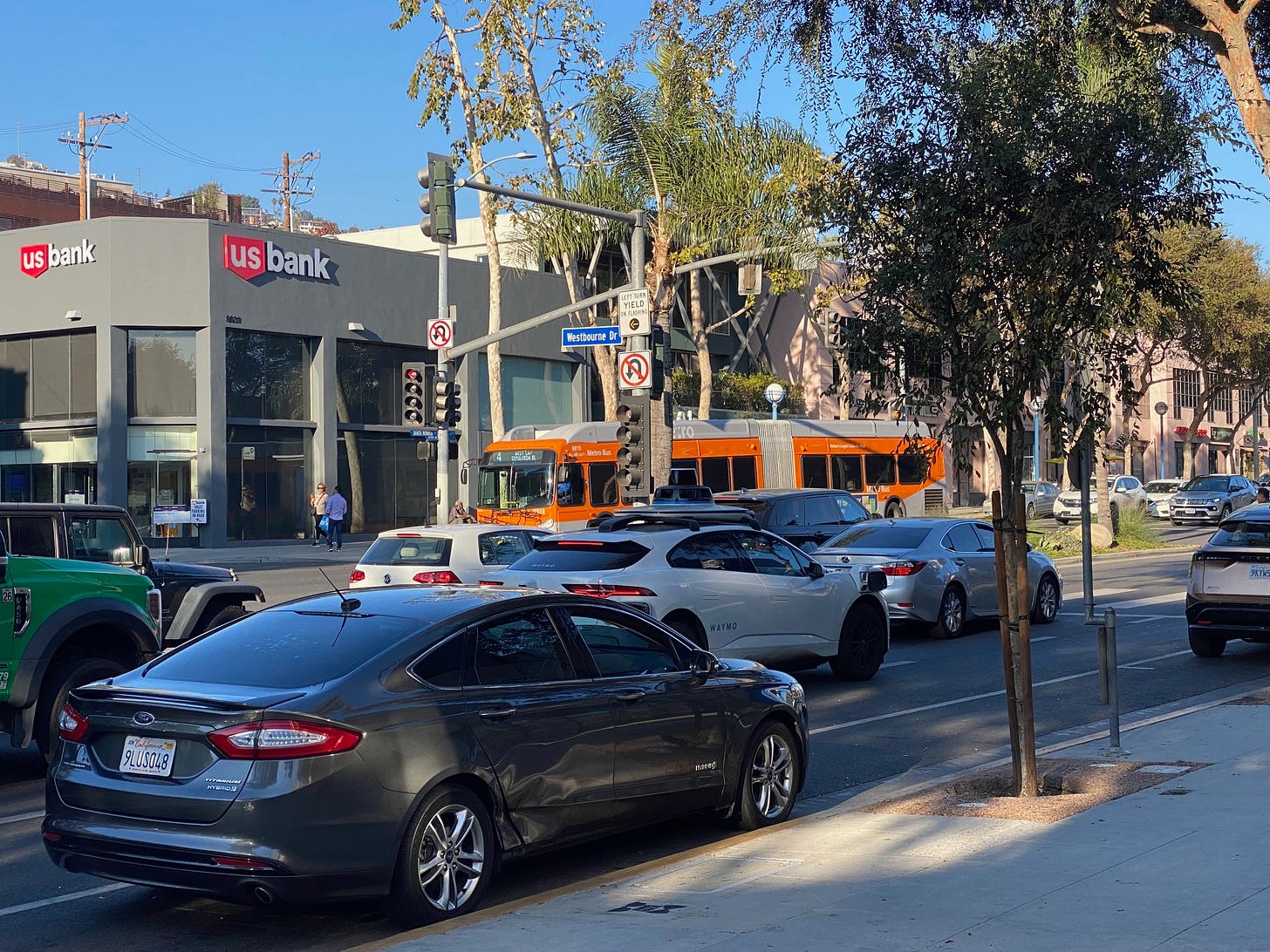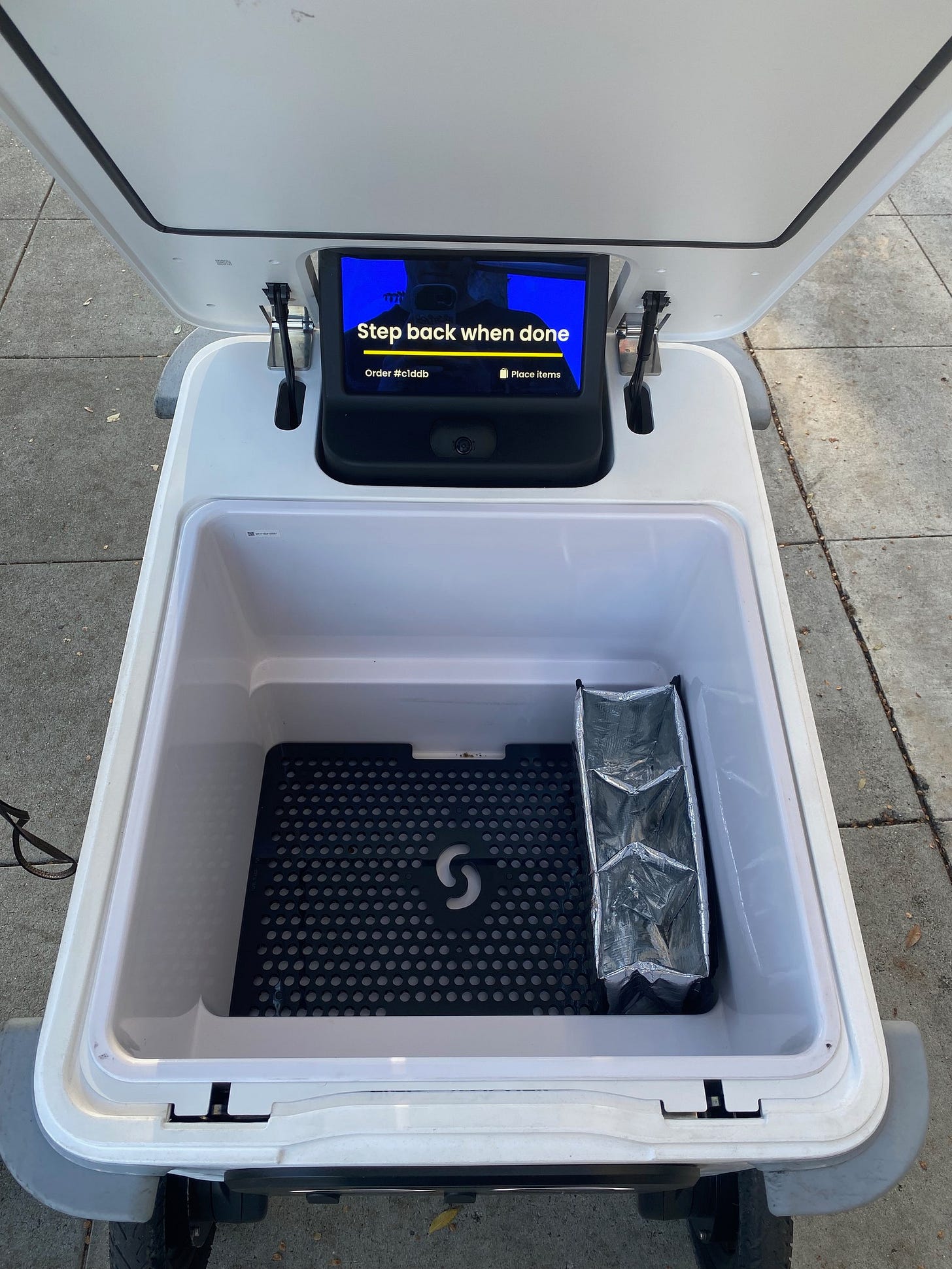Going On Delivery With Serve's Third Generation Hardware
Fresh capitalized and with added executives, Serve Robotics is hungry for growth
It’s a busy Friday afternoon in West Hollywood, and the streets and sidewalks teem with life: pedestrians and bicyclists cruise down Santa Monica boulevard, joggers are turning the steep intersecting streets into their exercise grounds, busses and autonomous Waymos are filled with commuters wrapping up their weeks. This busy urban scene is the perfect proving ground for the real star of today’s show: Serve Robotics’ new third generation sidewalk delivery robots.
As I first encounter a handful of Serves being unloaded out of a delivery van, I think “these look awfully familiar.” I’m on site to kick the tires on new hardware — sleeker, faster, almost twice the operating range per charge — but the bots being disgorged from this tired Chevy look like they’ve been battling the mean streets of SoCal for years. Then I see it, like a distant mirage, a new 3rd Generation robot, descending from the hills above.
While the robot is being remotely monitored from Serve’s local operations center, on this trip it’s also accompanied by Andy Perry, Serve’s Product Manager, who has been with the company since it started as a skunkworks project within Postmates. He talks me through some of the other improvements to the model, internally known as version 1.7.
For starters, it’s got a redesigned drive train and suspension, plus independent front and rear axle steering, making it easier for the robot to hop and pop over Southern California’s crappy curbs. The acceleration and speed have improved, but so have the braking power and stop distance (by 40%), to keep things safe. Also keeping things secure is an improved Lidar with higher resolution, along with a repositioned Intel RealSense system, and RGB camera sensors. Another big improvement is the bot’s ability to handle inclement weather, meaning not only changes to the tires but also a blower over the cameras to clear the lenses; let’s just say this hints at Serve’s ambitious plans to enter new markets over the next few years.
Dinner Is Delivered
But what’s the 1.7 like in action? Our friendly robot — she goes by Amanda — is called into service for the early dinner rush, and I follow along as the little machine crosses the street, obeying both traffic laws and earthlings’ customs. It stops in front of Fresh Corn Grill, and a worker leaves the restaurant’s counter to pop an order into the robot’s cooler-like belly. He quickly closes the lid, and the load-in is complete, taking no more than 45 seconds. And just as quickly, the robot starts off towards its hungry customer, zipping back down the street. In fact, this pint-sized delivery worker is going too quickly, I lose sight of it after it makes a quick turn down Huntley Drive; here’s hoping that food arrived not too jostled.
Anthony Armenta Joins as Chief Software and Data Officer
Afterwards, I catch up with Anthony Armenta, who just returned to Serve as the company’s Chief Software and Data Officer, after spending a few years leading hardware development at GM BrightDrop. He gets a bit more into the nitty gritty of the technical improvements. In terms of cost efficiency, he shares that “manufacturing costs have been halved compared to the previous generation by leveraging a global supply chain with final assembly in North America, making these robots more accessible for large-scale deployment.”
Keep reading with a 7-day free trial
Subscribe to Ottomate to keep reading this post and get 7 days of free access to the full post archives.





